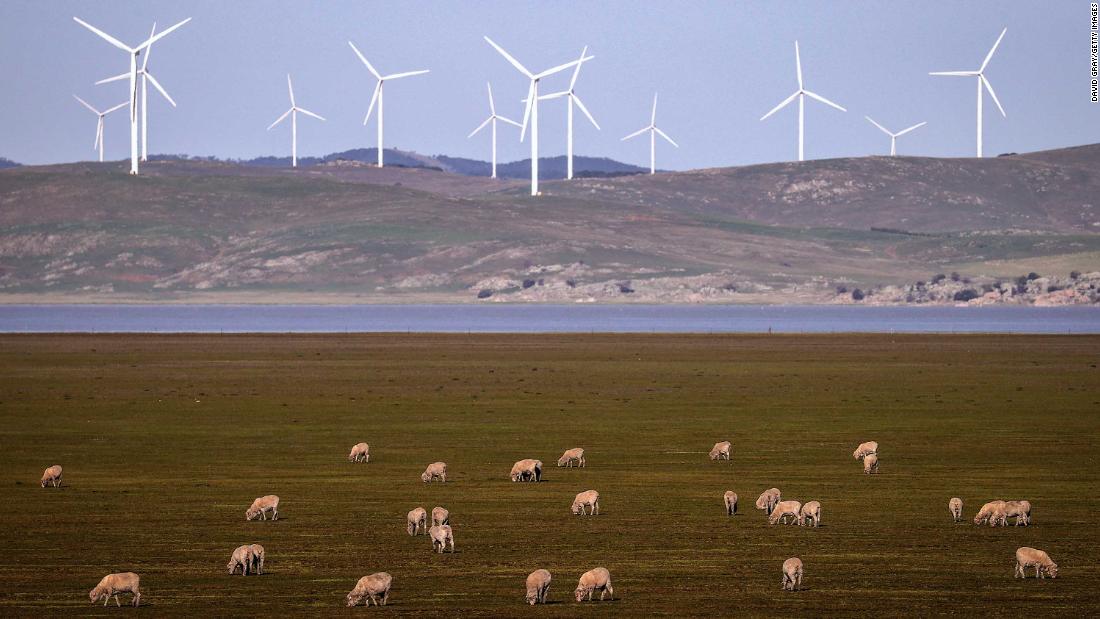Is it a sailboat or a cargo ship?
0:53
London (CNN Business) -
It is possible to achieve net zero greenhouse gas emissions by 2050, but it will cost between $ 1 trillion and $ 2 trillion a year.
This is assured by a new report that warns that the cost of absolute climate change will be much higher.
The Energy Transitions Commission (ETC), a coalition of top executives from 45 energy producers, financial institutions and environmental groups, said Wednesday that it is "technically and economically possible" to achieve net zero emissions by mid-term. century, at an annual cost of approximately 1% to 1.5% of world GDP.
Limiting global temperature increases to 1.5 degrees Celsius will require zero net emissions around 2050. This is a goal of the Paris Agreement.
The additional investments required are "easily affordable", given current global savings and sustained low interest rates.
They are also dwarfed by the amount of public spending devoted to stimulating the economy after the coronavirus pandemic, the ETC added.
A triple-decker, zero-emission plane, is it the future of aviation?
Formula 1: plan for zero carbon emissions by 2030 1:44
Zero emissions are 'achievable'
ArcelorMittal, Bank of America, BP and Royal Dutch Shell are among the companies represented at the ETC.
Individual members of the European Climate Foundation and the World Resources Institute are also members, although neither organization was asked to endorse the report.
"There is no doubt that it is technically and economically possible to achieve the zero-carbon economy we need by 2050," ETC co-chair Adair Turner said in a statement.
"And zero should mean zero, not a plan that relies on large-scale, ongoing use of 'offsets' to balance ongoing greenhouse gas emissions."
"Action in the next decade is crucial, otherwise it will be too late," he added.
As governments and businesses continue to grapple with the consequences of the coronavirus pandemic, the focus is once again on the climate crisis.
Climate change has been represented in wildfires in California and damage to glaciers in Antarctica, in addition to several other extreme weather events in the United States.
Economic brief: oil company BP promises zero emissions by 2050
Carbon dioxide emissions drop in Australia 0:50
The risks of climate change
The pandemic has demonstrated the "unpreparedness of the world economy for systemic risks," according to ETC.
The report said that unprecedented government spending in recovery efforts from the pandemic provides an opportunity to invest in a more resilient economy.
Organizations like the International Energy Agency (IEA) and the UN have also urged governments to ensure that efforts to boost the economy support climate and clean energy goals.
But the pandemic has affected global energy investment, which is expected to fall by a fifth this year, compared to 2019. Renewable energy has performed better than fossil fuels, but investment in large wind and solar projects, in In the first quarter of 2020, it dropped to levels three years ago, according to a report earlier this year from the IEA.
The IEA said last week that achieving net zero CO2 emissions, by 2070, will require additional investments of US $ 31 trillion on top of commitments already made by governments.
On the other hand, the International Renewable Energy Agency said last year that total investment in the energy system should increase by $ 15 trillion above current plans.
However, not addressing climate change could cost much more in the long run.
The International Renewable Energy Agency found that climate-related savings would be worth up to $ 160 trillion accumulated over the next three decades.
The ETC said that most of the new investments should be directed towards expanding the supply of carbon-free electricity.
Methane gas emissions are at their highest level, according to the Global Carbon Project
Boost renewable energy
To boost the supply of renewable energy, the average annual rate of increase in wind and solar capacity will need to be five to six times the increase achieved in 2019.
Government policy and regulation should facilitate private investment and innovation, while discouraging the use of fossil fuels, through carbon pricing mechanisms.
Buildings, transport and industry must be electrified and use hydrogen where this is not possible.
Remaining energy use in sectors that cannot be electrified should be decarbonized with carbon capture and storage and sustainable bioenergy, the ETC said.
The report identified the construction, aviation and shipping industries as facing the highest costs related to decarbonization.
Coal mining, car manufacturing and ranching are at higher risk of losing jobs.
Governments will need to manage their energy transition strategies to offset unemployment and possible rising costs in these areas, the ETC said.
The report says China has the resources and technological leadership to become a developed economy with no carbon by 2050. All developing nations could achieve net zero emissions by 2060 at the latest, he added, but require development finance, for risk. and attract private green investment.
The ETC report comes a week after the US Commodity Futures Trading Commission warned, in a separate study, that climate change poses a systemic risk to the US financial system and could affect capacity. of the economy to generate income and employment.
climate change

